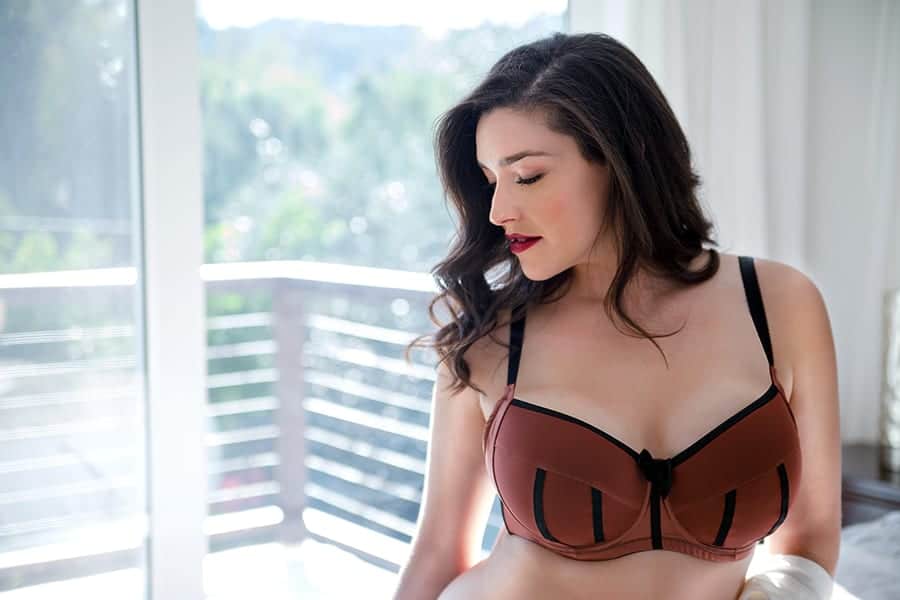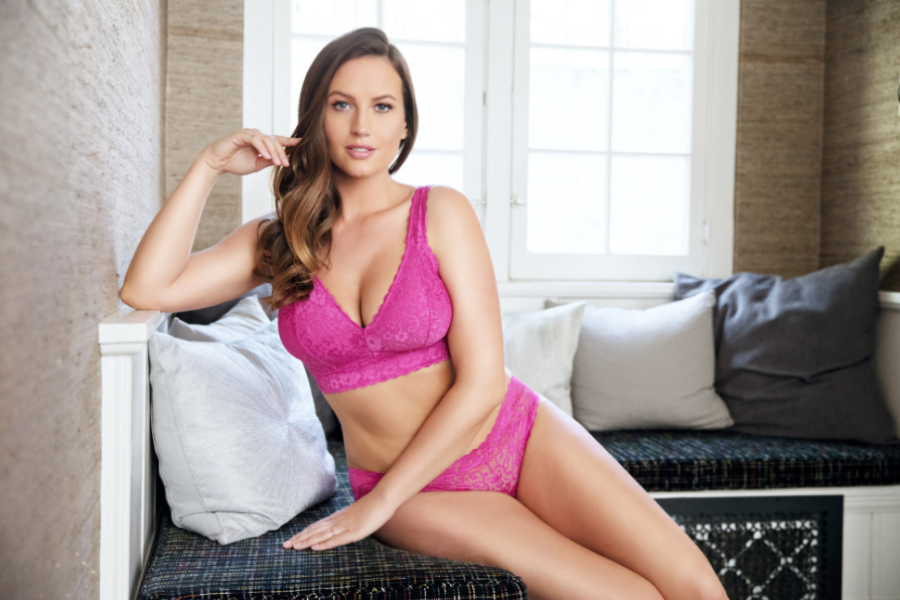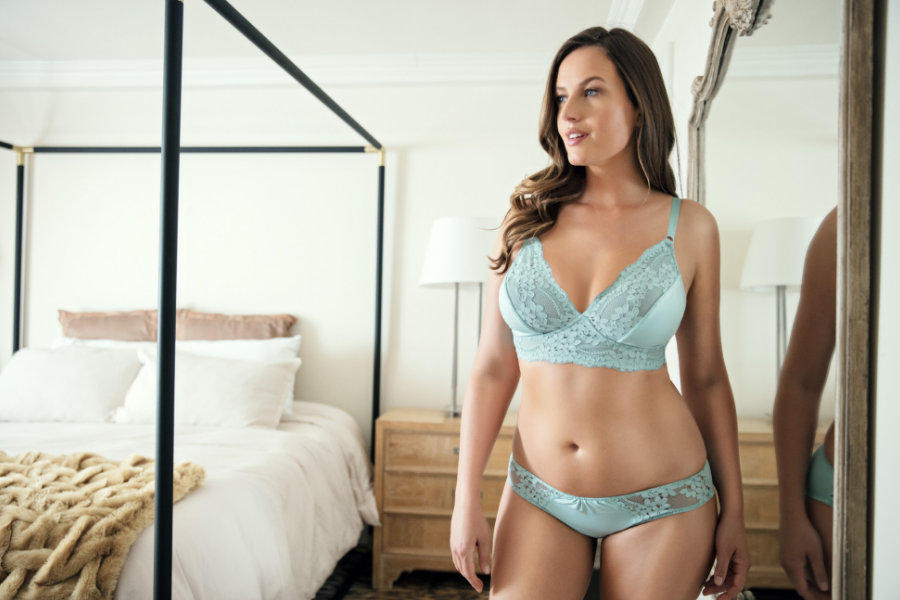Bra Sizing Explained: Here’s How Bra Sizing Works
Small, medium, large — that may be the way some clothing is sized, but it certainly doesn’t apply to most bras. Getting a flawless fit is a little more complicated when it comes to your bras because there are multiple measurements that come into play in ensuring these undergarments lend the optimal level of support. And we’re not just talking about your band size and your cup size, either — things get even more complicated once you’re trying to figure out your sister size or convert your size from one country’s system to another.
Here’s the thing: We want to take the stress out of sizing. That’s why we’ve outlined exactly how bras are sized, as well as some helpful info on sister sizing and international sizing, in this handy guide. We hope it helps!
Band/cup sizes
A bra size features two measurements: the band (32, 34, 36, etc.) and the cup (A, B, C, etc.).
The band size is calculated based on the measurement around your rib cage (right under your breasts). As the band size gets larger, the entire bra scales up with it — that’s why a 38A will look much different than a 32A. Since roughly 80% of a bra support comes from the band, it’s also why you’ll notice a lot of fit issues if you’re wearing the wrong band size — and not just a band that’s too tight or loose, either. You might find you’re not quite filling out the cups, or that the straps are too wide on your shoulders, for example.
Cup size, which is represented alphabetically (A to K and larger), is partially calculated based on the overbust measurement, or the measurement of the fullest part of the bust. That being said, cup size is also largely influenced by breast volume, shape, and size. This is why bra fitting and bra sizing is more of an art than a science. It’s not uncommon for two women to wear the same size bra and have completely different breasts.
Sizing
Bra sizing isn’t entirely standardized — so your size may vary slightly from brand to brand and style to style. If you’re shopping lingerie brands that are based in the UK or Europe, you might have had to convert your bra size from its US size to a UK or European bra size. Rest assured, the converted size will be relatively the same in terms of fit and volume – usually, the only difference is the cup size. This is also why you might not wear the same bra size in every brand (and why it’s so important to know what a proper fitting bra looks like).
Related Post: Find Your Bra Sister Size With Our Simple Chart

Bra sister sizes
Did you know that you have more than one size? It’s incredibly useful to know your bra sister sizes. It allows you to get a perfectly fitting bra when that particular style or brand tends to run large or small.
Though your sister size will have a different number and letter, the volume of the cups will be essentially the same. You have two bra sister sizes – one with a larger band and smaller cup and one with a smaller band and larger cup.
Here are a few common sister sizes:
C Cup
32C: 30D, 34B
34C: 32D, 36B
36C: 34D, 38B
38C: 36D, 40B
D Cup
32D: 30DD, 34C
34D: 32DD, 36C
36D: 34DD, 38C
38D: 36DD, 40C
DD Cup
32DD: 34D, 30DDD (or 30E for UK sizing)
34DD: 36D, 32DDD (or 32E for UK sizing)
36DD: 38D, 34DDD (or 34E for UK Sizing)
DDD/E Cup
32DDD (32E for UK sizing): 34DD, 30DDDD/G (or 30F for UK sizing)
34DDD (34E for UK sizing): 36DD, 32DDDD/G (or 32F for UK sizing)
36DDD (36E for UK sizing): 38DD, 34DDDD/G (or 34F for UK sizing)
38DDD (38E for UK sizing): 40DD, 36DDDD/G (or 36F for UK sizing)
Sound confusing? Fortunately, we formulated a sister size chart that makes it super simple to find yours (A to K cup sizes included!)
US to UK sizes
It’s crucial to understand how to convert your cup size from US to UK sizing — particularly if you’re large busted, as UK sizing is employed by a majority of full-figure lingerie brands (Parfait included). The main difference between the two systems lies in the cup sizing, particularly on the larger end of the spectrum — US and UK bra cup sizes only look the same AA-DD.
Beyond that, US bra sizes include DDD/F, DDDD/G, H, I, J, K, L, M, N, and O. On the other hand, UK sizes include E, F, FF, G, GG, H, HH, J, JJ, and K. It’s important to note that most US lingerie brands only go up to a DDDD/G (or H cup at most).
On the other hand, most brands with UK sizing go up to a K cup (which is an O cup in US bra sizing). If you’re already getting a headache from the hassle of trying to translate your bra size, don’t hesitate to use our convenient US to UK bra size conversion chart.
Finding The Best Fit
Clearly, bra sizing is complex — but it’s well worth the effort to get a grasp on the subject before shopping for some new underthings. Still struggling to find the right bra size? We always recommend getting a bra fitting at your local lingerie boutique or department store, especially if you suspect it may have changed due to weight loss/gain, breastfeeding, etc. A professional will be able to determine your size more accurately by taking other fit factors into account beyond your band and cup measurements (such as your breast shape and placement).
Related Post: Why All Women Should Get A Professional Bra Fitting

We Highly Recommend
Whether you’re shopping for new everyday bras or lingerie for a special occasion, it’s always a good idea to seek out a second opinion. We know how hard it is to find bras that fit well and feel good, especially when you’re doing it on your own. If you’ve ever felt unsure about your bra size or you just don’t know where to go to find good bras, it’s time to let a bra fitter help.
Many specialty lingerie boutiques offer bra fittings. Their expert bra fitters will take the pain and frustration out of bra shopping and do all the work for you. Even better, their product knowledge can save you time and money. Plus, they know where all of the best bras are hiding.
If you’ve struggled with finding bras in the right size, it’s time to make a change. Visit our specialty store locator to find a store near you and schedule an appointment.
Happy bra shopping!






